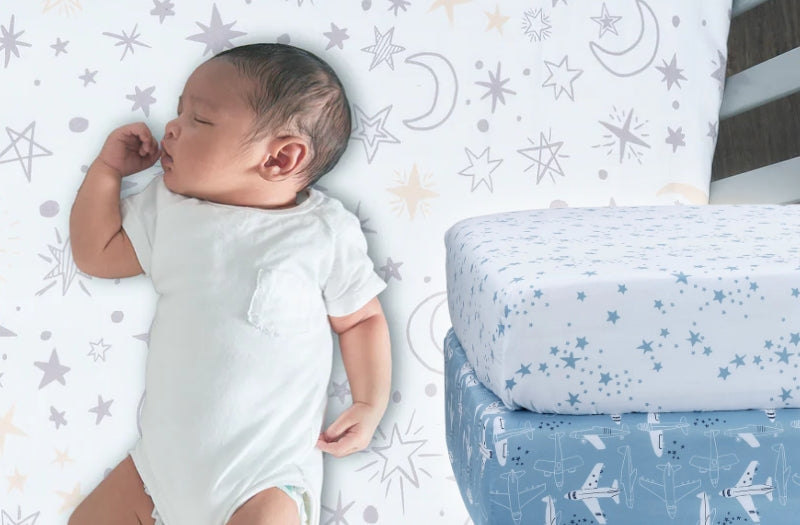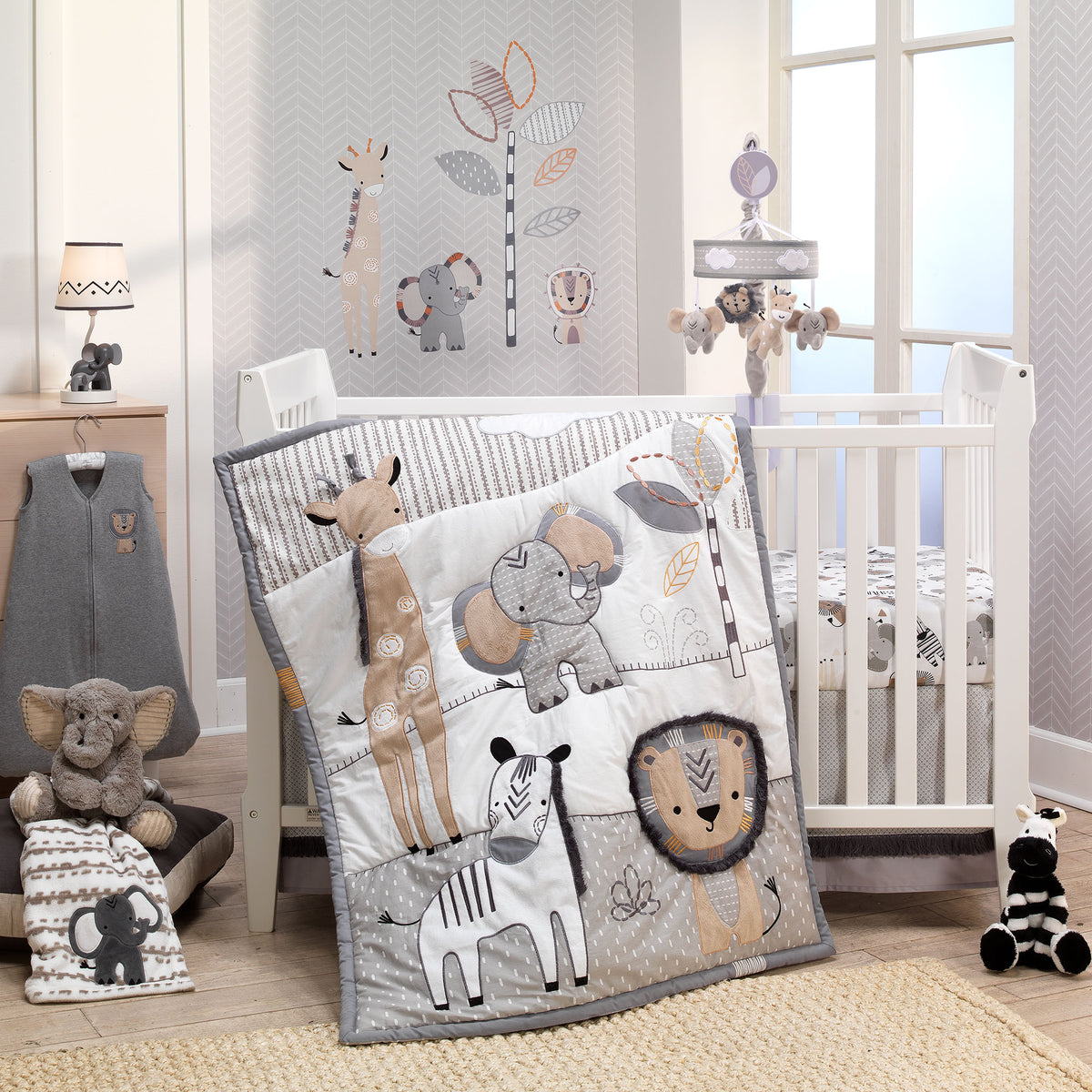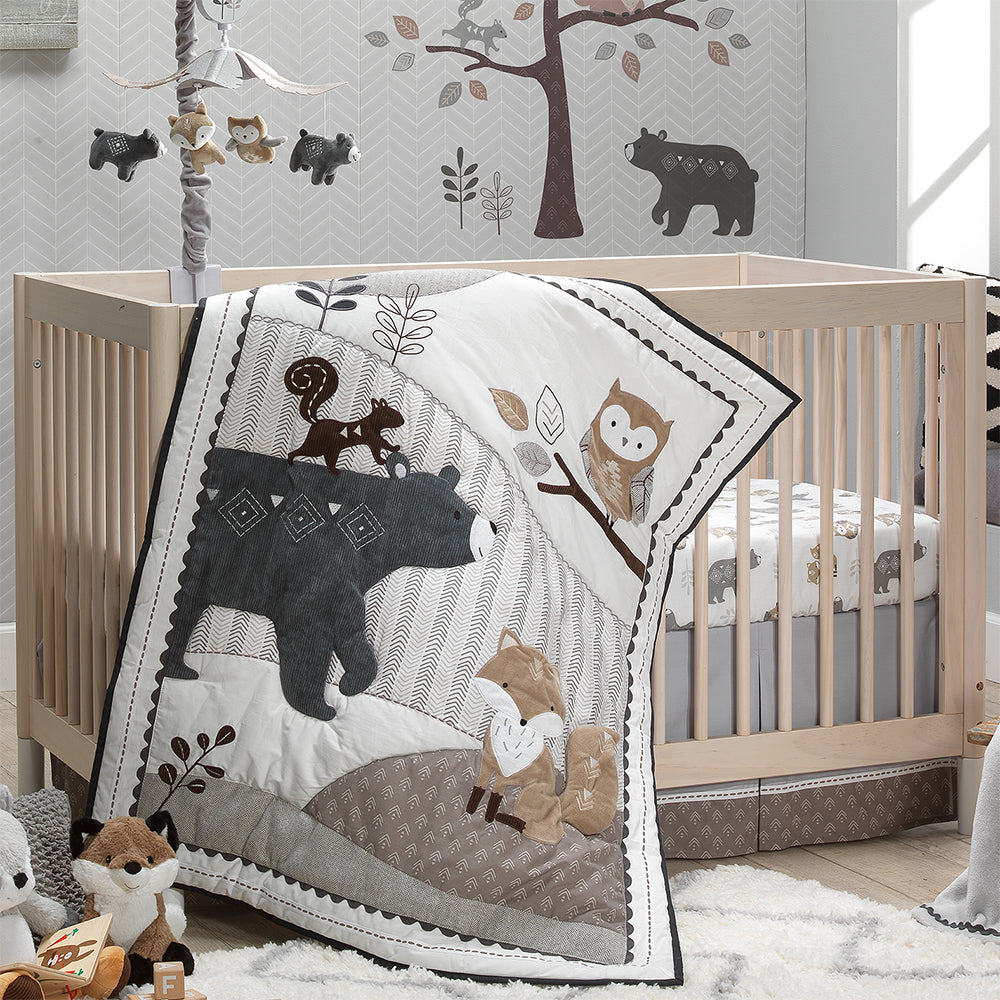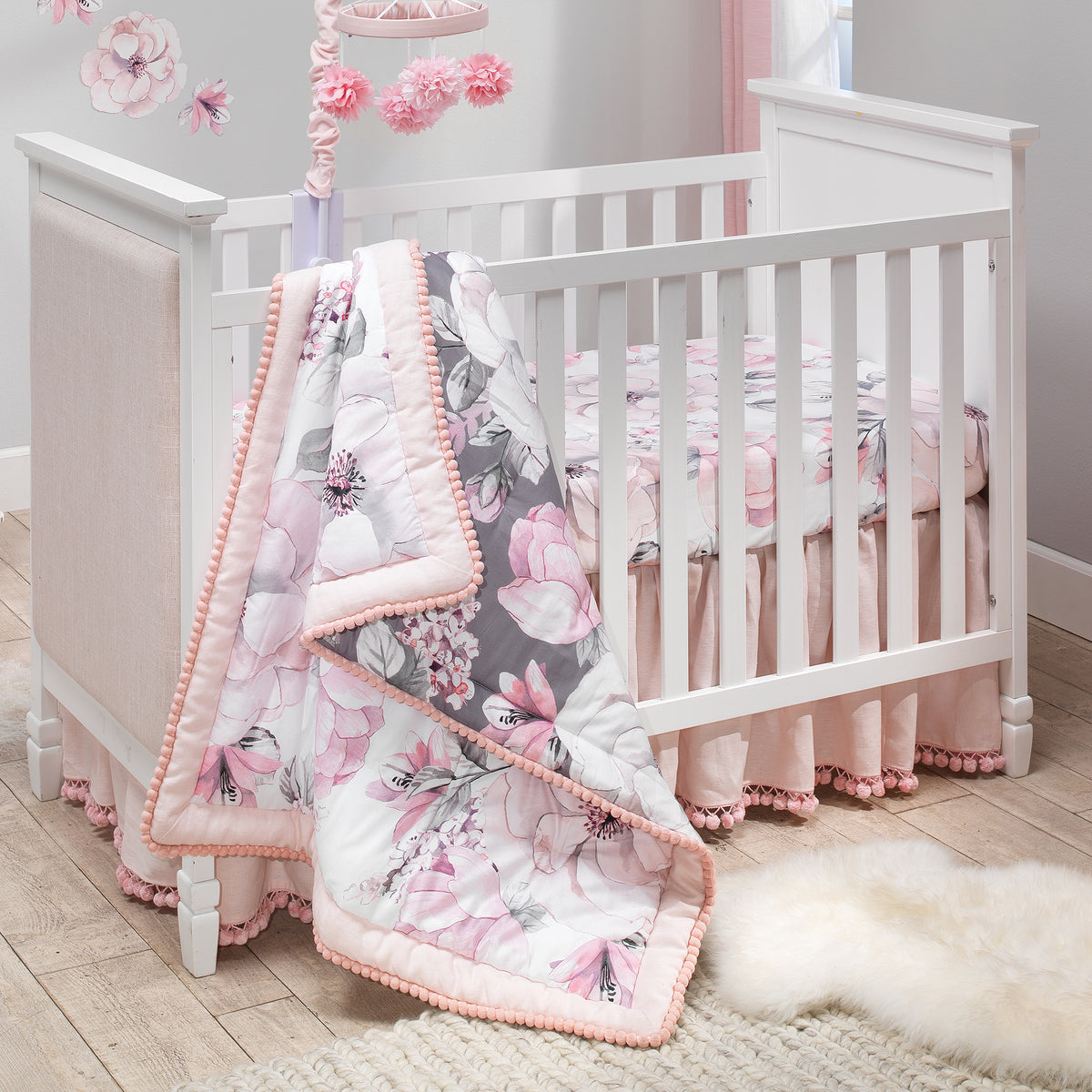
As parents, we all strive to create the most nurturing environment for our little ones. Selecting the best material for crib sheets is part of that journey.
As a mother of three, I’ve gone through my fair share of crib sheets. So I’m sharing the various benefits and drawbacks each material presents and some tips on how to choose. That way, you can make an informed decision to provide your baby comfort all year round.
Popular Crib Sheet Materials : Which is Best?
Cotton is the best material for crib sheets, primarily due to its inherent properties that cater to the essential needs of infants. This natural fiber is highly breathable, helping to regulate babies body temperature. It is hypoallergenic making it perfect for sensitive infant skin. Cotton is also easy to clean and durable against lots of washes.
Of course, there’s more to know about cotton and other crib sheet materials. Below, explore the most popular crib sheet materials and the pros and cons each fabric offers:
| Material | Description | Pros | Cons |
| Cotton | Soft, breathable, and durable. Available in standard and organic varieties. Ideal for sensitive skin. | Soft, Breathable, Hypoallergenic, Durable | May feel stiff before the first few washes |
| Bamboo | Silky, moisture-wicking, and promotes airflow. Eco-friendly depending on the manufacturing process. | Soft, Breathable, Hypoallergenic, Durable | Some processing methods not eco-friendly |
| Jersey | Made from cotton or a blend, with a special knitting for a smooth texture. Elastic and lightweight, fitting snugly on the mattress. | Soft, Breathable, Lightweight, Durable | May stretch out over time |
| Flannel | Soft and cozy, providing warmth on cold nights. Absorbent and comfortable. | Soft, Absorbent, Warm, Durable | Can hold static, May pill or shed |
| Polyester Blends | Mix of synthetic and natural fibers. Offers durability and cost-effectiveness. | Budget-friendly, Durable | Less breathable than cotton |
Cotton Crib Sheets
Soft and attractive, cotton is one of the most breathable crib sheet materials. You can choose between standard cotton and organic cotton crib sheets for a comfortable sleeping surface. What’s more, cotton crib sheets are attractive and come in a wide range of colors, prints, and patterns.
Another benefit is that cotton is hypoallergenic. These softest crib sheets are also recommended by dermatologists for people with sensitive skin.
Cotton also holds its shape and withstands many washings, even in hot water. Did you know that cotton is 30% stronger when wet? That means you can buy a few sets of crib sheets with the confidence they’ll last.
Pros:
- Soft
- Breathable
- Hypoallergenic
- Durable
- Easy to find
Cons:
- May feel stiff before the first few washes
Bamboo Crib Sheets
Bamboo is an up-and-coming fabric that is growing ever more popular with good reason. Bamboo is one of the best options for breathable crib sheets. Silky smooth bamboo fabric is good at wicking away moisture. This material also promotes airflow. If your baby tends to sweat while sleeping, bamboo crib sheets are an excellent choice.
Bamboo can also be an eco-friendly choice depending on the source of the bamboo and processing techniques. When possible, choose organic bamboo manufactured using a mechanical process.
Pros:
- Soft
- Breathable
- Hypoallergenic
- Durable
Cons:
- Some bamboo processing techniques are not eco-friendly
Jersey Crib Sheets
Jersey sheets are known for their softness. Made from either 100% cotton or a blend of cotton and other materials, jersey is a very soft material. Jersey involves a special type of knitting that creates a smooth, silky texture. Jersey fabrics are typically very elastic. That means jersey crib sheets can stretch to fit snugly on the mattress.
Not only are jersey sheets the softest crib sheets, but they are also lightweight. This makes them ideal for warmer weather. Grab a jersey crib sheet for the summer season, or all year round if your baby is a hot sleeper.
Pros:
- Soft
- Breathable
- Lightweight
- Durable
Cons:
- May stretch out over time
Flannel Crib Sheets
On chilly winter nights, you want the best warm crib sheets. The best material for warm crib sheets is flannel. Soft and cozy, flannel crib sheets provide the comfort your baby needs on cold nights. At the same time, flannel sheets are also absorbent, pulling away moisture so that your baby can stay comfortable.
Pros:
- Soft
- Absorbent
- Warm
- Durable
Cons:
- Inclined to hold static electricity
- May pill or shed
Polyester Blend Crib Sheets
Polyester blends are a mix of synthetic and natural fibers. Microfiber crib sheets often fall into this category. One of the main advantages of polyester sheets is the low cost. However, polyester blends aren’t as soft and breathable as cotton.
Pros:
- Budget-friendly
- Durable
Cons:
- Not as breathable as other fabrics
- Not as soft as other fabrics
How to Choose the Best Materials for Crib Sheets
Assess Your Baby's Skin Sensitivity
For babies with sensitive skin or conditions like eczema, opt for hypoallergenic materials such as cotton or bamboo. These natural fibers are gentle on the skin and reduce the risk of irritation.
Consider the Climate
The climate you live in plays a significant role in choosing the right fabric. In warmer climates, breathable and lightweight materials like cotton and bamboo ensure your baby stays cool and comfortable. For cooler environments, flannel can provide the necessary warmth.
Focus on Comfort and Safety
Comfort is paramount for a good night's sleep. Soft and cozy materials that also support safety standards, including being snug-fitting and breathable, are crucial. Cotton, with its soft texture and breathability, is often the go-to choice for ensuring both comfort and safety.
Align with Nursery Decor
Lastly, the variety of colors, patterns, and textures available allows you to choose sheets that not only meet your practical needs but also reflect your nursery's style. Cotton sheets, for example, come in a wide range of designs, offering both comfort and a chance to express your personal aesthetic.
Crib Sheet Materials FAQs
If you still have questions about the best material for crib sheets, let’s resolve them now. Take a look at some frequently asked questions below:
Can the Material of Crib Sheets Affect a Baby’s Sleep Quality?
The quick answer is yes. The material of crib sheets can affect your baby’s sleep quality. If your baby is too hot, they can get sweaty and be uncomfortable. Overheating can also put your baby at risk for SIDS, according to the American Academy of Pediatrics. The AAP recommends dressing your baby in one layer more than you would wear. Also, keep your baby’s nursery or sleeping area between 68 to 72 degrees.
Your baby may be too hot if their face is flushed or they’re sweating. Use breathable, lightweight sheets during warm weather to help keep your baby comfortable. Cotton, bamboo, and jersey are some of the best choices if your baby tends to get too warm. If your home is cooler, consider using flannel sheets.
What Crib Sheets Are Best for Babies with Eczema?
The best crib sheets for babies with eczema are hypoallergenic materials such as organic cotton or bamboo. Dermatologists recommend that people with sensitive skin use cotton sheets.
Are there any Materials I Should Avoid in Crib Sheets?
Because babies have sensitive skin, it’s best to stick to tried and true fabrics such as cotton, jersey, and bamboo. These materials are soft, breathable, and comfortable for your baby. That said, many babies can be comfortable sleeping on synthetic materials such as polyester. Ideally, if you do want to choose sheets that include polyester, choose a blend that also contains cotton or another natural fiber.
Get Quality Crib Sheets at Lambs & Ivy
At Lambs & Ivy, we understand the importance of creating a nurturing and safe sleeping environment for your little one. That's why we offer an exquisite collection of crib sheets, crafted to ensure the highest level of comfort and style for your baby's nursery.
Try our organic cotton sheets or 100% cotton sheets for the highest level of comfort without sacrificing style.




